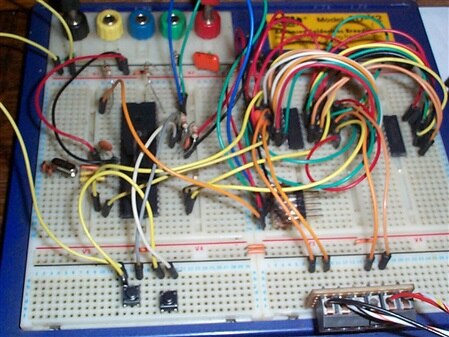I`m in the building stage of a Robot, and am currently going through my box of assorted stepper motors and hooking them up to circuit I`v built and writen the driver s/ware for.
I`m using the SN754410NESN754410NE dual H-Bridge as the driver.
I have (or rather Had) 10 of them this morning, and have catalogued a good 50% of my motors so far in terms of wiring sequence, there motors range in Current and voltage.
I blew a chip this morning, seems it didn`t like 24v without current protection! LOL
anyway, I have some 1.4A motors and wondered if it`s possible to piggy-back these chips to effectively double the current capacity to 2 Amps?
It won`t be a Physical piggy-back, just simply the pins all connected 1 for 1 on a seperate area of board real estate, each chip with it`s own heatsink.
I can`t see any Technical reason why this shouldn`t be possible, it`s a Digital signal fed in and at a relatively low frequency.
so if any amongst you have any reason Why these 2 chips shouldn`t be married this way, speak now or forever hold your peace! 





